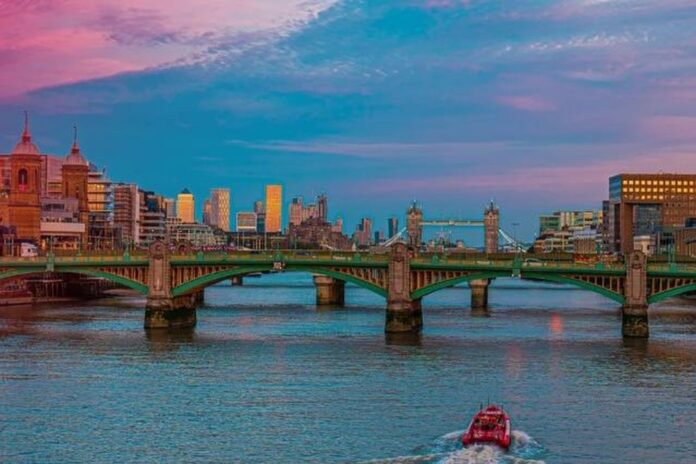Partner content: London is home to nearly 10 million people and fuels business, tourism and innovation, yet its 5G is among the worst in the UK – that needs to change
London is beautiful. It’s a vibrant city that nearly 10 million people call home, where ancient walls meet modern skylines and bustling communities of rich diversity go busily about their daily lives. With almost 2,000 years of history woven into its streets, architecture and culture, every addition to the city, whether physical or digital, must be made with care.
In today’s world, connectivity is no longer a luxury, but a fundamental enabler of every aspect of life. Yet many Londoners are missing out on the benefits of reliable, high-quality connectivity. According to a recent Ookla report, London’s 5G performance is among the worst for UK cities. For a city that fuels business, tourism and innovation, that needs to change.
Delivering seamless, high-performing connectivity in a complex urban environment like London is no small feat. Many iconic buildings, both period (like The Houses of Parliament) and modern (like the Gherkin), create challenges, not to mention the adverse effects of dense populations and infrastructure. Where the solution is building connectivity into the fabric of the city. This must be done thoughtfully, respectfully, and with ambition. Like any great architectural design, the best networks should complement their surroundings. They should enrich London’s tapestry, not overwrite it.
A challenge as complex as the city itself
There are, of course, sophisticated challenges to delivering connectivity in a city like London. Modern buildings create Faraday cage effects that impede phone signals, and data traffic is booming, driven by a growing population and new technologies like AI and AR leveraging the capability of the latest network technologies. While these issues are common across UK cities, they are intensified in the capital by the sheer volume of demand to preserve aesthetic and cultural heritage.
Consider Regent’s Park. Installing a cell tower there might enhance connectivity for nearby sites like London Zoo, but such a move would likely be seen as intrusive, spoiling the landscape of a historic Royal Park. Similar concerns arise in rural areas, where new towers are often opposed on the grounds that they spoil green spaces. In London, those sensitivities are amplified by the layers of architectural and historic significance found throughout the city.
Take London’s South Bank as another example. Upgrading network infrastructure along this iconic stretch would significantly improve connectivity in one of the capital’s busiest zones. Yet, doing so with visible infrastructure risks disrupting the visual harmony of one of London’s most cherished riverfronts.
Compounding these challenges is sheer population density. The country’s 17 most densely populated regions all belong to London, and the City’s population density is 30 times higher than the UK average. With greater density comes heavier demand and more congested network traffic.
The importance of connectivity
Better connectivity and the technologies it enables are vital new threads in London’s story. While people want to call, text, and access the internet wherever they are, best-in-class connectivity goes further.
Reliable, high-speed networks power public services, enable smarter, safer cities, and foster innovation. From remote healthcare to connected transport and high-performance business infrastructure, robust connectivity helps make a city more liveable, sustainable, and competitive.
By upgrading at scale, London can avoid falling behind not just in mobile speeds but in the quality of life it offers residents, visitors, and businesses.
Signs of progress
Change is already underway. We see it in modern mobile networks across the Underground and new fibre networks across London Boroughs. These aren’t just headline-grabbing upgrades—they’re proof that scalable, high-quality infrastructure can be delivered despite the challenges presented by a dense urban and historic environment.
The Tube’s experience remains familiar, but access to fast mobile networks has elevated it. Famous stations remain unblemished, but their connectivity has been transformed. Similarly, the Royal Borough of Kingston hasn’t compromised on its heritage, but its new fibre networks help keep the borough safe and connected.
London’s infrastructure upgrade at scale is on the way, and these examples show how targeted, thoughtful deployments can work with the surrounding environment. Perhaps not every connectivity solution will be aesthetically perfect, but aesthetic impact should always be considered as part of the conversation. From urban planners to network operators and the wider industry everyone should approach this challenge with humility and open dialogue to help raise the bar and protect the city’s heritage.
Future technologies backed by policy
Building discreet, high-performing networks is becoming easier with technological progress and increasingly viable for operators through small cell technology. Small cells cost a tenth of macro deployments and offer increased capacity. And while you won’t find small cells displayed in the national gallery, they are far more discreet than macro deployments.
With rooftop space in high demand, small cells offer a less disruptive solution, as they are deployable on building sides or existing infrastructure like lampposts and utility poles.
Crucially, these innovations are backed by policy. The UK government’s 10-Year Infrastructure Strategy commits to improving mobile networks, breaking down deployment barriers, and setting a forward-looking connectivity agenda. The stage is set for London’s next step forward.
A tapestry enriched, not patched
London’s history should never be compromised by progress, but it shouldn’t be a barrier either. With care and sensitivity, connectivity can become one of the capital’s most important modern assets. It’s time to build infrastructure that unlocks the power of an interconnected future while honouring everything that’s come before.
About the author

Paul Osborne, Chief Commercial Officer, UK & Ireland, Boldyn Networks has 30 years’ global experience in the telecommunications and technology industries, having held senior roles in the UK, Europe, Central and Latin America. He is responsible for Boldyn Networks’ overall growth plans in the UK and Ireland. Paul is also the commercial lead for strategic partnerships with Government bodies and mobile/fixed network operators, that create long term value from the deployment of new, innovative communications networks in critical customer experience environments from the London Underground and offshore windfarms to smart cities




